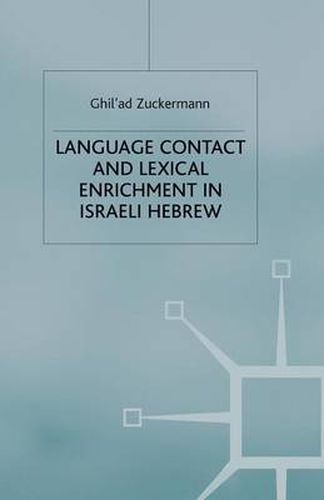Readings Newsletter
Become a Readings Member to make your shopping experience even easier.
Sign in or sign up for free!
You’re not far away from qualifying for FREE standard shipping within Australia
You’ve qualified for FREE standard shipping within Australia
The cart is loading…






This title is printed to order. This book may have been self-published. If so, we cannot guarantee the quality of the content. In the main most books will have gone through the editing process however some may not. We therefore suggest that you be aware of this before ordering this book. If in doubt check either the author or publisher’s details as we are unable to accept any returns unless they are faulty. Please contact us if you have any questions.
Israeli Hebrew is a spoken language, ‘reinvented’ over the last century. It has responded to the new social and technological demands of globalization with a vigorously developing multisourced lexicon, enriched by foreign language contact. In this detailed and rigorous study, the author provides a principled classification of neologisms, their semantic fields and the roles of source languages, along with a sociolinguistic study of the attitudes of ‘purists’ and ordinary native speakers in the tension between linguistic creativity and the preservation of a distinct language identity.
$9.00 standard shipping within Australia
FREE standard shipping within Australia for orders over $100.00
Express & International shipping calculated at checkout
This title is printed to order. This book may have been self-published. If so, we cannot guarantee the quality of the content. In the main most books will have gone through the editing process however some may not. We therefore suggest that you be aware of this before ordering this book. If in doubt check either the author or publisher’s details as we are unable to accept any returns unless they are faulty. Please contact us if you have any questions.
Israeli Hebrew is a spoken language, ‘reinvented’ over the last century. It has responded to the new social and technological demands of globalization with a vigorously developing multisourced lexicon, enriched by foreign language contact. In this detailed and rigorous study, the author provides a principled classification of neologisms, their semantic fields and the roles of source languages, along with a sociolinguistic study of the attitudes of ‘purists’ and ordinary native speakers in the tension between linguistic creativity and the preservation of a distinct language identity.